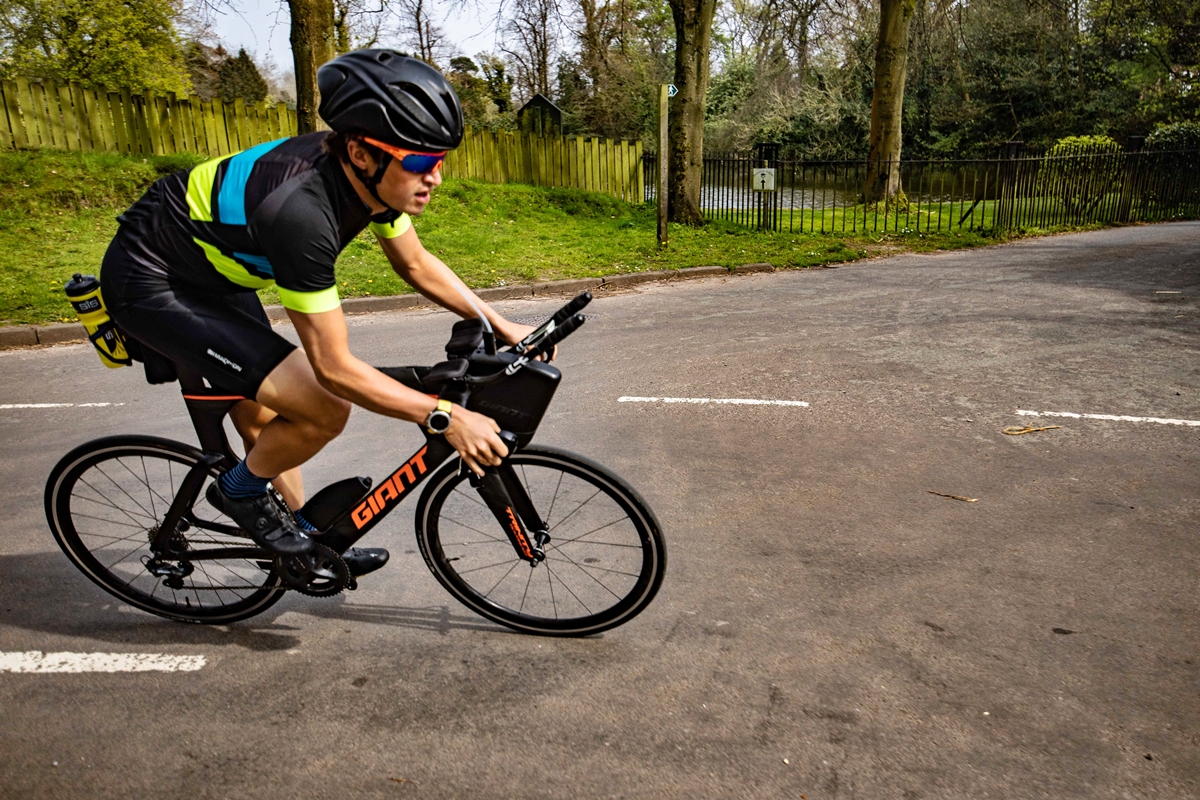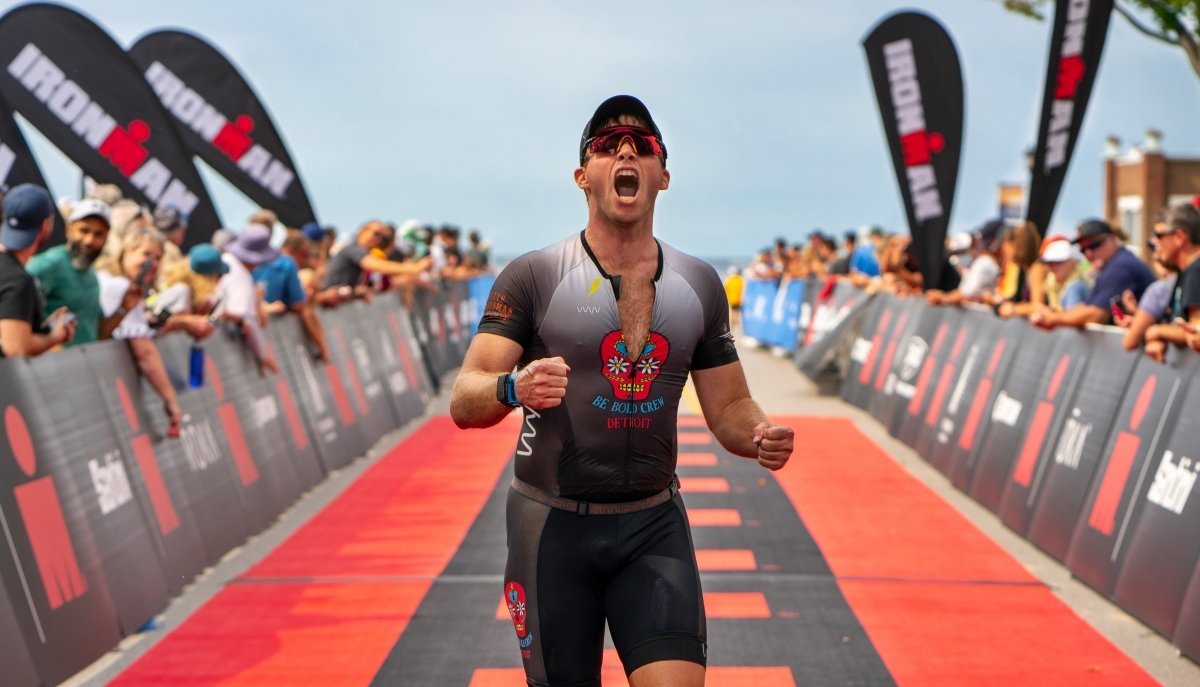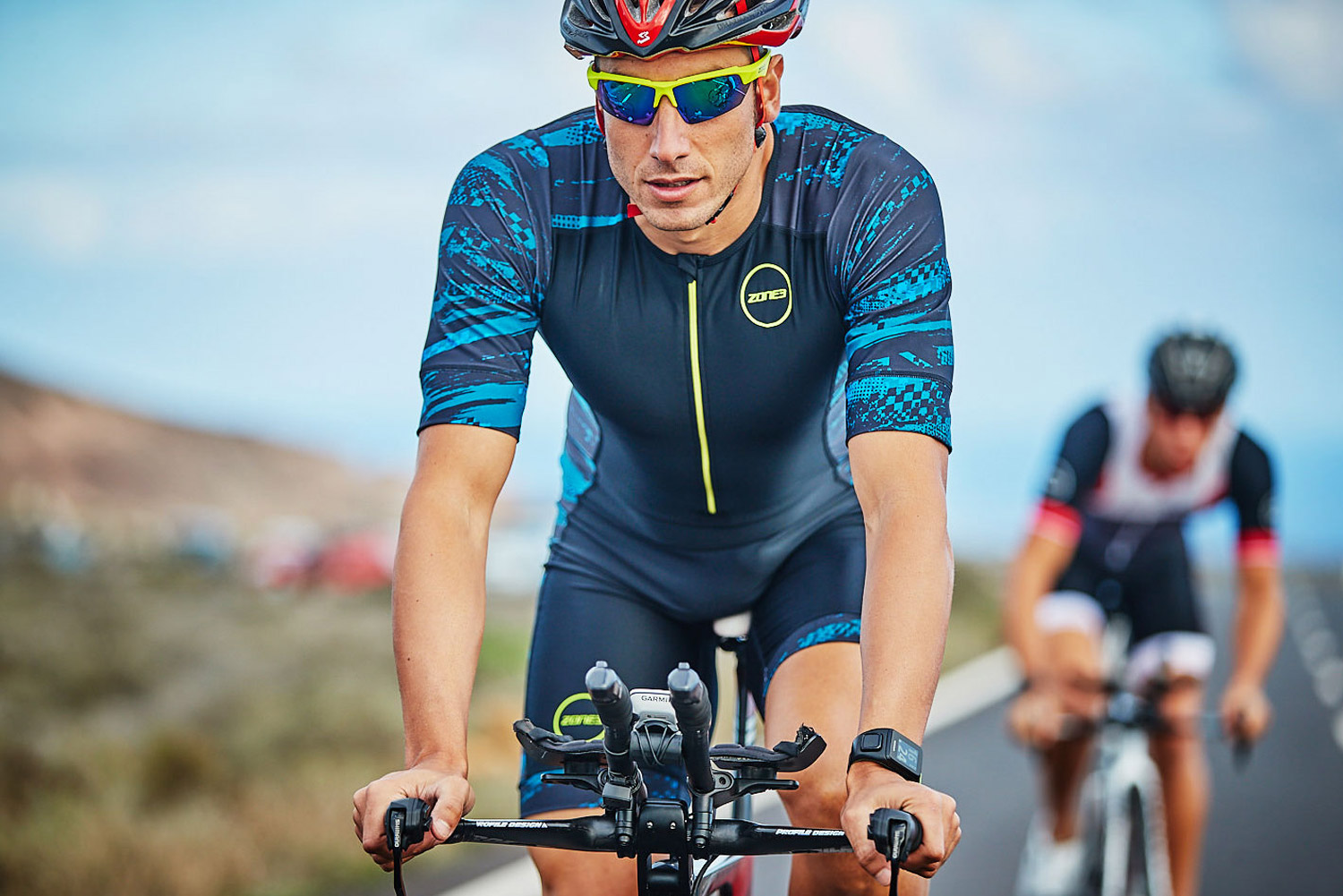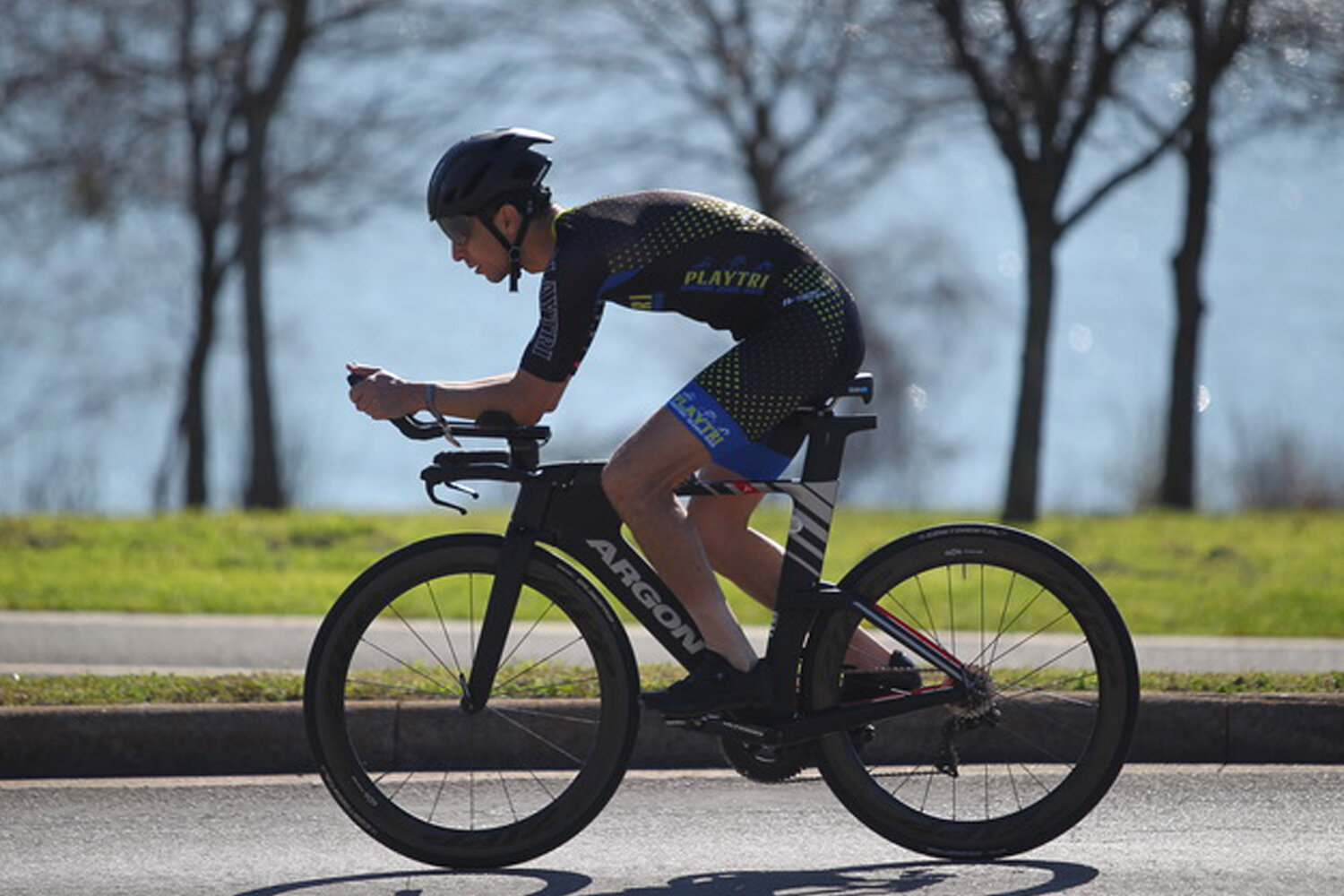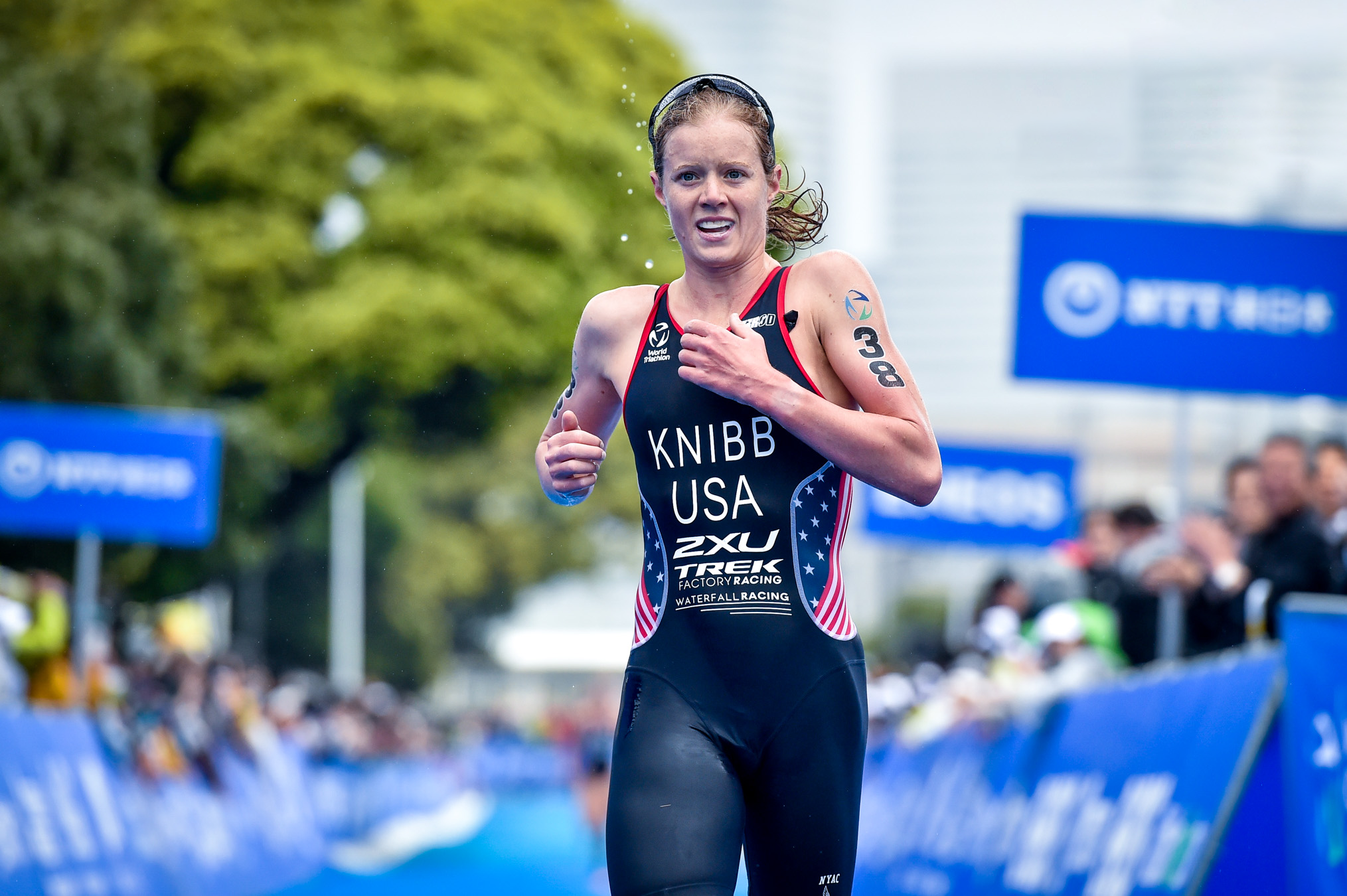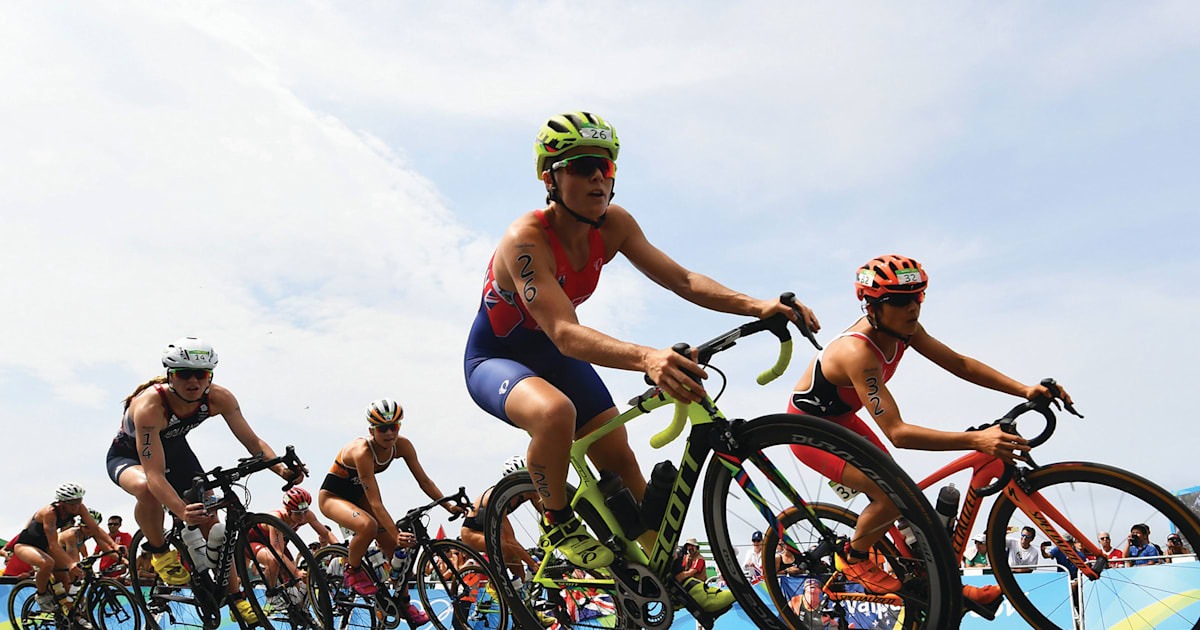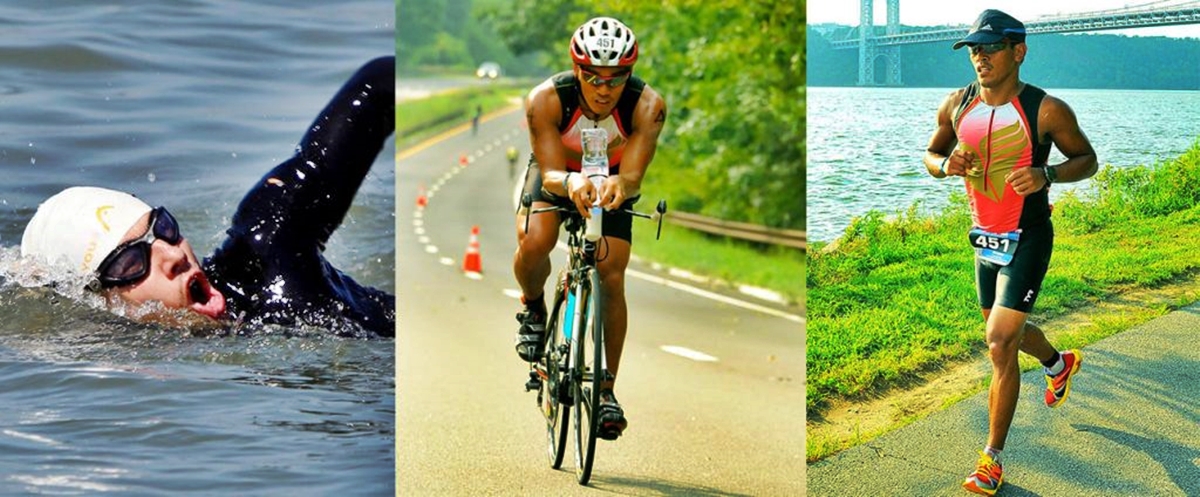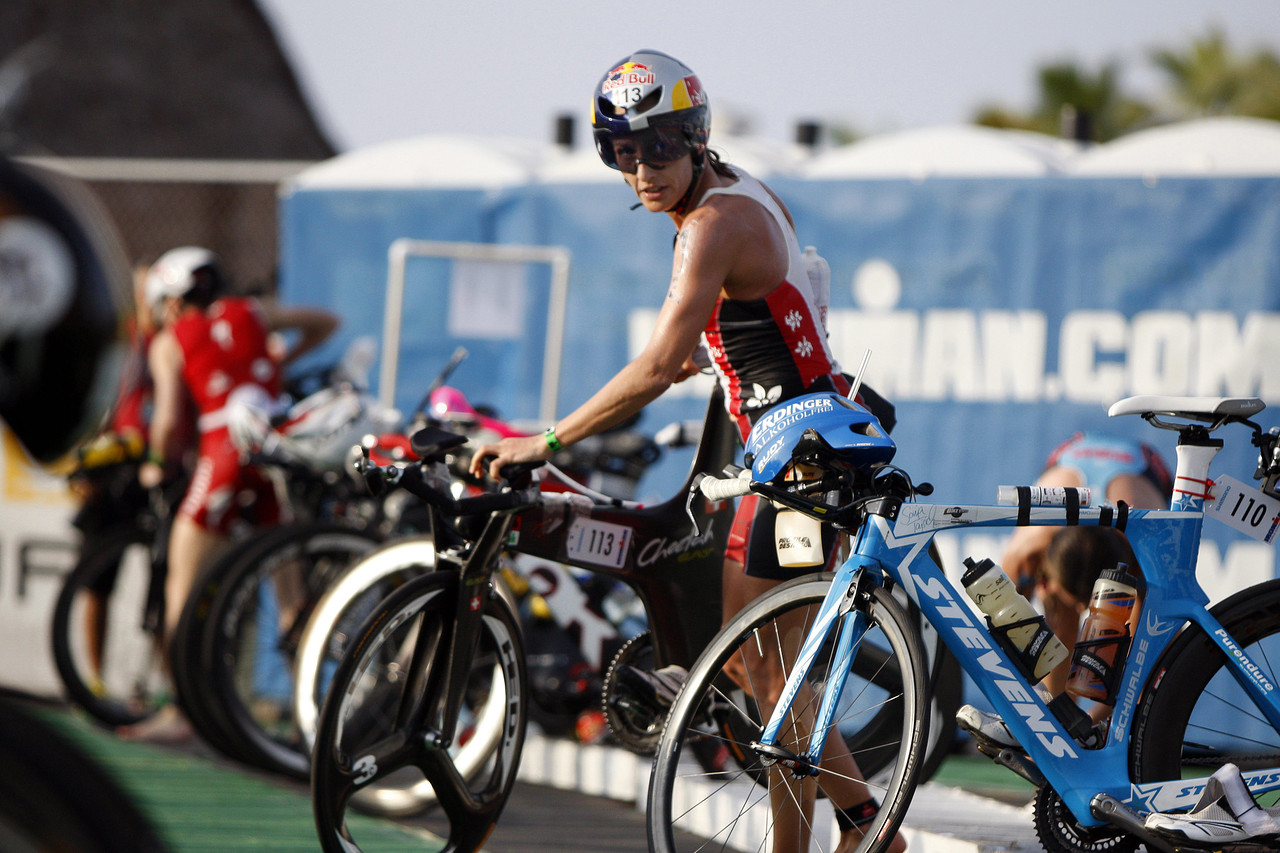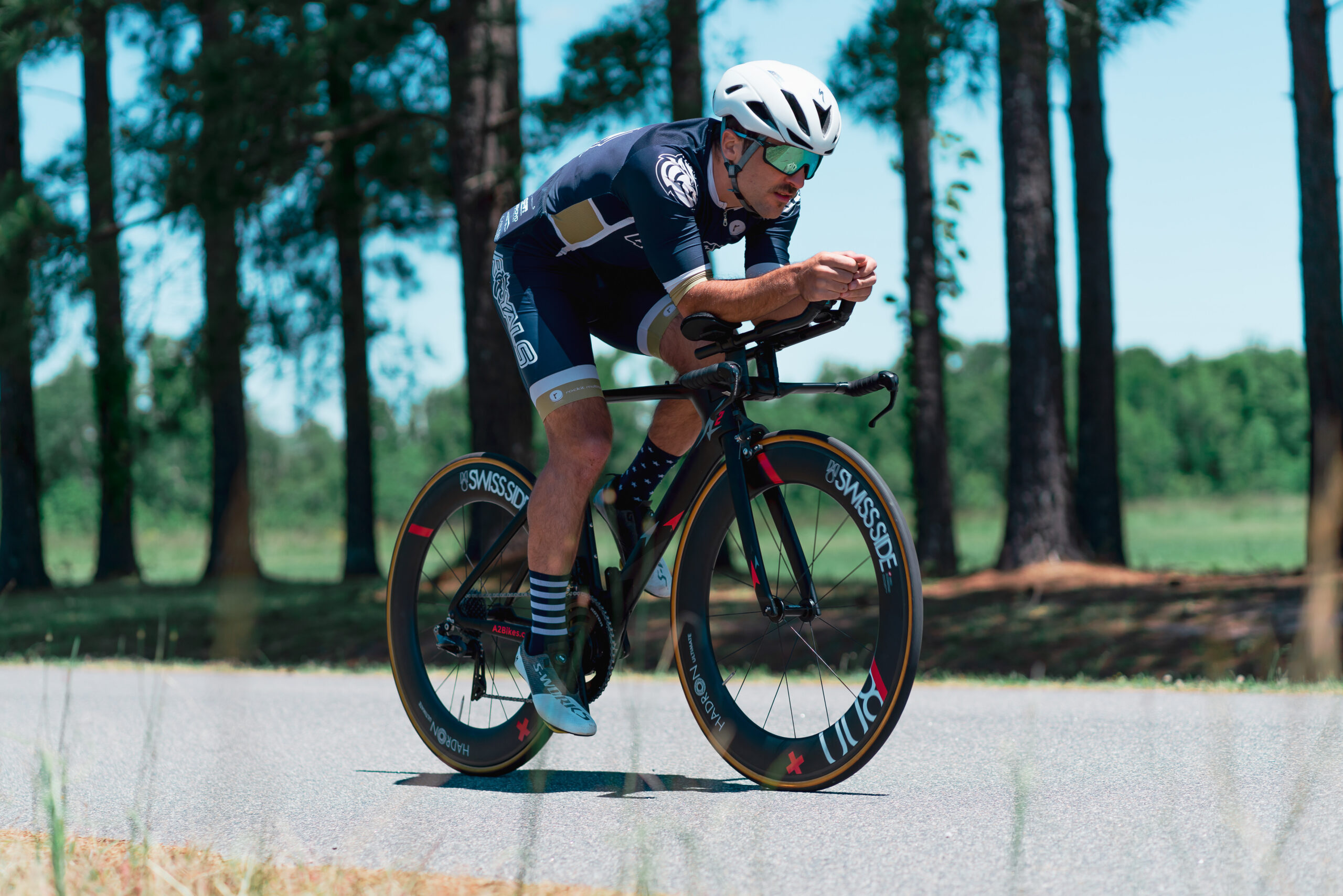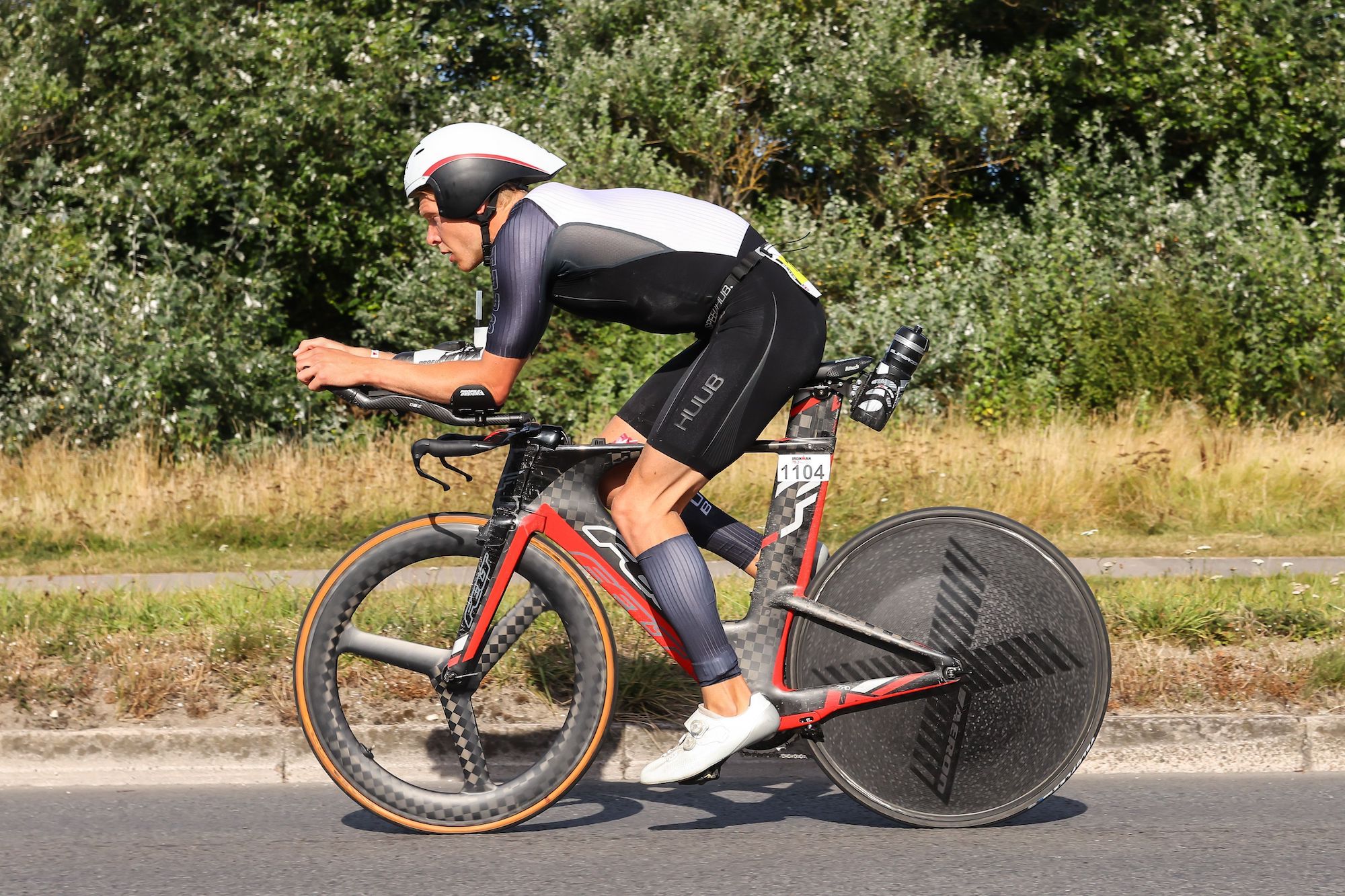

Featured
How Long Is The Bike Ride In A Triathlon
Modified: January 2, 2024
Discover the duration of the bike ride in a featured triathlon event. Prepare yourself for the ultimate test in endurance and determination.
Introduction
Triathlons, often regarded as the ultimate test of endurance and athleticism, have gained immense popularity in recent years. Combining three challenging disciplines – swimming, cycling, and running – triathlons push athletes to their limits both physically and mentally. Among these three disciplines, the bike leg is perhaps the most critical and demanding, requiring cyclists to navigate tough terrains and maintain high speeds.
In a triathlon, participants must complete a designated distance for each discipline, including the swim, bike ride, and run. While the swim and run distances vary little from one event to another, the bike ride often varies significantly based on the type of triathlon. Understanding the length of the bike ride in a triathlon is crucial for participants to properly train, set realistic goals, and devise effective race strategies.
In this article, we will delve into the specifics of the bike leg in a triathlon, exploring the various distances for different race distances and providing useful training tips. Whether you are new to triathlons or a seasoned participant looking to improve your performance, this guide will arm you with the knowledge you need to conquer the bike leg of a triathlon.
Understanding Triathlons
Triathlons are multisport events that require participants to complete three consecutive disciplines: swimming, cycling, and running. The sport originated in the 1970s in California and has since grown into a global phenomenon, attracting participants of all ages and fitness levels.
Triathlons come in various distances, catering to individuals with different levels of experience and fitness. The most common triathlon distances include sprint, Olympic, half Ironman, and Ironman.
- Sprint Triathlon: The sprint distance is the shortest among the triathlon distances. Typically, it involves a 750-meter swim, a 20-kilometer bike ride, and a 5-kilometer run.
- Olympic Triathlon: The Olympic distance, also known as the standard distance, is the distance raced in the Olympics. It consists of a 1.5-kilometer swim, a 40-kilometer bike ride, and a 10-kilometer run.
- Half Ironman Triathlon: The half Ironman distance is a step up from the Olympic distance and requires significant endurance. It includes a 1.9-kilometer swim, a 90-kilometer bike ride, and a 21.1-kilometer run (half marathon).
- Ironman Triathlon: The Ironman distance is the pinnacle of triathlon endurance events. It involves a 3.8-kilometer swim, a 180-kilometer bike ride, and a full marathon 42.2-kilometer run.
Triathlons can take place in various settings, including open water, pools, and indoor facilities. They can also take place on different terrains, such as flat pavement, hilly terrain, or off-road trails, adding a layer of complexity to each discipline.
The aim of a triathlon is to complete all three disciplines as quickly as possible while conserving enough energy to finish strong. Transition times, during which athletes switch from one discipline to another, also play a role in the overall race time. Efficient transitions, known as the “fourth discipline,” can make a difference in the final results.
Triathlons attract athletes from different backgrounds, including recreational fitness enthusiasts, seasoned endurance athletes, and even professional athletes competing at the highest level. The sense of accomplishment, the challenge of pushing one’s limits, and the camaraderie amongst fellow participants make triathlons a unique and rewarding experience.
Bike Leg in a Triathlon
The bike leg in a triathlon is a crucial component of the race. It not only requires physical endurance but also strategic planning and technical skills. The bike leg usually follows the swim and precedes the run, making it a vital opportunity for participants to gain momentum and advance their position.
During the bike leg, triathletes ride a bicycle over a designated distance. The course can vary significantly depending on the race and terrain, ranging from flat and fast road courses to challenging hilly routes or even off-road trails in the case of off-road triathlons. It is essential for participants to prepare both physically and mentally for the bike leg to ensure a successful race.
The bike leg offers participants a chance to increase their overall average speed for the race. Cycling is typically faster than swimming or running, allowing athletes to cover more ground in a shorter amount of time. It also provides an opportunity to conserve energy for the run leg, as the bike ride is the longest part of the race.
During the bike leg, participants must adhere to the rules and regulations set by the race organizers. This includes drafting rules, which limit the amount of time an athlete can spend in the slipstream of another cyclist to maintain fair competition. It is important for participants to familiarize themselves with these rules to avoid penalties and disqualification.
Participants must also ensure they have the necessary equipment for the bike leg, including a well-maintained bicycle, a helmet, appropriate cycling attire, and hydration and nutrition supplies. It is essential to choose a bike that is suitable for the terrain and weather conditions of the race. Many triathletes opt for road bikes or triathlon-specific bikes, which are designed for speed and aerodynamics.
Proper bike handling skills are crucial during the race, especially when navigating corners, descents, or technical sections of the course. Triathletes should practice bike handling techniques, such as cornering, braking, and shifting gears, to maintain control and minimize the risk of accidents.
The bike leg is often a mentally demanding part of the triathlon. Participants may face challenges such as fatigue, wind resistance, changing weather conditions, and the need to maintain a steady pace. Developing mental strategies, such as focusing on technique, breaking the ride into manageable segments, and staying positive, can help athletes overcome these challenges and perform at their best.
Overall, the bike leg in a triathlon is an exciting and crucial component of the race. With proper preparation, training, and strategy, triathletes can make the most of this leg to gain an advantage and achieve their goals.
Factors Affecting Bike Ride Length
The length of the bike ride in a triathlon can vary significantly depending on several factors. These factors can dictate the overall distance participants are required to cycle and impact the level of challenge they will face during the race. Understanding these factors is crucial for triathletes to adequately prepare and set realistic goals.
Here are some of the key factors that affect the bike ride length in a triathlon:
- Race Distance: The distance of the triathlon itself is the most influential factor in determining the bike ride length. As mentioned earlier, different triathlon distances come with specific distances for each leg of the race. Sprint triathlons typically have shorter bike rides, while Ironman triathlons require long-distance cycling.
- Course Design: The design of the course can greatly impact the bike ride length. Courses can vary in terrain, including flat and fast roads, hilly routes, or even off-road trails. Hilly courses, for example, may require participants to cycle greater distances due to the elevation changes.
- Organizer’s Philosophy: Some triathlon organizers may choose to prioritize specific disciplines within the race, resulting in longer or shorter bike rides compared to the standard distances. It is essential for participants to review the race details provided by the organizers to understand the specific bike ride length for a particular event.
- Environmental Conditions: Environmental factors such as wind, temperature, and humidity can impact the bike ride length. Strong headwinds can slow down participants and make the ride more challenging, while favorable tailwinds can provide some advantage. High temperatures and humidity levels can also affect energy levels and hydration needs, potentially influencing the overall bike ride performance.
- Technical Challenges: Some triathlons may include technical sections or challenging obstacles on the bike course. These could include steep climbs, technical descents, or off-road segments. Such challenges may require participants to slow down or navigate them with caution, impacting their average speed and overall bike ride length.
It is essential for triathletes to assess these factors when preparing for a race. Understanding the distance, terrain, and potential challenges can help participants tailor their training, select appropriate equipment, and develop effective race strategies. Additionally, staying informed about the race details provided by the organizers will ensure that participants are aware of any deviations from standard distances.
Standard Distances for Bike Leg
Triathlon races follow specific standard distances for each leg, including the bike leg. These standardized distances allow participants to compare their performances across different events and provide a framework for training and race planning. Understanding the standard distances for the bike leg is essential for triathletes striving for success in their races.
Here are the standard distances for the bike leg in the most common triathlon race distances:
- Sprint Triathlon: In a sprint triathlon, the bike leg typically covers a distance of 20 kilometers (12.4 miles). This relatively short ride allows participants to showcase their speed and power over a compact distance.
- Olympic Triathlon: The bike leg in an Olympic triathlon covers a distance of 40 kilometers (24.8 miles). This longer ride requires participants to maintain a consistent pace and showcases their endurance and bike-handling skills.
- Half Ironman Triathlon: The bike leg in a half Ironman triathlon, also known as the 70.3 distance, requires participants to cover a distance of 90 kilometers (55.9 miles). This challenging ride tests the athletes’ ability to sustain their effort over a longer distance.
- Ironman Triathlon: The legendary Ironman triathlon pushes athletes to their limits with a grueling bike leg of 180 kilometers (112 miles). This ride demands exceptional endurance, mental fortitude, and strategic pacing to complete.
It is important to note that while these distances represent the standard lengths for each triathlon race category, slight variations may occur in specific races. Factors such as course design or the organizers’ philosophy may result in a slightly longer or shorter bike leg. Participants should always review the race details provided by the organizers to confirm the exact distance for the bike leg in their specific event.
Being aware of the standard distances for the bike leg allows triathletes to set goals, plan their training, and strategize their race execution. They can gauge their performance against the average times achieved by others in their respective categories and strive to improve their speed and endurance on the bike. Moreover, understanding the distances helps participants select the appropriate equipment, including the type of bike and the gear ratios, to optimize their performance during the bike leg.
By having a comprehensive understanding of the standard distances for the bike leg, triathletes can better prepare themselves physically and mentally, improving their chances of achieving success and reaching their triathlon goals.
Sprint Triathlon Bike Ride Length
In a sprint triathlon, the bike leg is known for its speed and intensity. Participants in sprint triathlons face a challenging but manageable bike ride distance that adds an exhilarating element to the race. Understanding the specifics of the bike ride length in a sprint triathlon is essential for participants to adequately prepare and perform to their full potential.
The bike leg in a sprint triathlon typically covers a distance of 20 kilometers (12.4 miles). This distance strikes a balance between allowing participants to showcase their cycling skills and maintaining a manageable duration for those new to the sport or looking for a shorter race experience.
With a relatively short distance, the sprint triathlon bike leg demands participants to ride at a higher average speed compared to longer distance triathlons. Speed, agility, and quick transitions become critical factors for success in this leg of the race.
A 20-kilometer bike ride in a sprint triathlon presents athletes with an opportunity to demonstrate their power and ability to maintain a hard effort over a shorter distance. It is crucial for participants to plan their pacing strategy accordingly, aiming to start strong and maintain an aggressive yet sustainable intensity throughout the ride. Additionally, efficient bike handling skills, including cornering and gear shifting, are important for maximizing performance and conserving energy.
Training for the bike leg of a sprint triathlon should focus on developing a combination of cardiovascular endurance, muscular strength, and speed. Incorporating interval training sessions, hill repeats, and specific bike workouts into training regimens can help athletes improve their overall cycling fitness and performance specifically tailored for the sprint distance.
When it comes to equipment, most triathletes racing in a sprint triathlon opt for road bikes or triathlon-specific bikes. These bikes are designed to provide speed, aerodynamics, and agility on the road. Participants should ensure their bikes are properly maintained and in good working order to prevent any mechanical issues during the race.
Overall, the bike leg in a sprint triathlon is a thrilling and demanding segment of the race. Participants must be prepared to push their limits and maintain a high level of intensity throughout the 20-kilometer ride. By training effectively, understanding the demands of the sprint distance, and selecting the appropriate equipment, triathletes can confidently tackle this leg of the race and strive for success.
Olympic Triathlon Bike Ride Length
The bike leg in an Olympic triathlon is a challenging and pivotal part of the race, presenting participants with an opportunity to showcase their endurance and cycling skills. Understanding the specifics of the bike ride length in an Olympic triathlon is crucial for participants to properly prepare and plan their race strategy.
The bike leg in an Olympic triathlon covers a distance of 40 kilometers (24.8 miles). This longer ride requires participants to develop a balance between maintaining a sustainable pace and pushing themselves to their limits. The 40-kilometer distance allows athletes to showcase their endurance and ability to maintain a steady effort over a longer duration.
The bike ride in an Olympic triathlon demands a combination of strength, endurance, and tactical decision-making. Participants must plan their pacing strategy wisely, aiming to distribute their effort evenly throughout the ride. Starting strong without exhausting too much energy and assessing the course terrain early on can lead to a successful ride.
With a longer distance than a sprint triathlon, the bike leg in an Olympic triathlon allows athletes to settle into a rhythm and maintain momentum. Efficient bike handling skills, including cornering, gear shifting, and maintaining aero positions, become increasingly important during the ride, as does the ability to navigate any challenging terrain or environmental conditions.
Training for the bike leg of an Olympic triathlon should focus on developing and improving both aerobic and anaerobic endurance. Incorporating long rides, interval training sessions, hill repeats, and tempo rides into a training program can help athletes build the necessary strength, power, and endurance required for the 40-kilometer ride.
Choosing the right equipment is crucial for a successful Olympic triathlon bike leg. Road bikes or triathlon-specific bikes are commonly utilized, designed to optimize speed, aerodynamics, and overall performance on the road. Participants should ensure their bikes are properly fitted, well-maintained, and equipped with appropriate gears and accessories, including a helmet and hydration system.
Strategic race tactics in the bike leg of an Olympic triathlon can also play a significant role in achieving success. Assessing the course profile, understanding wind conditions, and timing efforts to take advantage of downhill sections or tailwind can help athletes optimize their performance and conserve energy for the run leg.
The bike leg in an Olympic triathlon presents a challenging yet rewarding opportunity for participants to demonstrate their cycling expertise and endurance. By training diligently, selecting suitable equipment, and implementing effective race strategies, triathletes can optimize their performance and strive for success in the 40-kilometer ride.
Half Ironman Triathlon Bike Ride Length
The bike leg in a half Ironman triathlon is a true test of endurance, requiring participants to push their limits and maintain a steady effort over a long-distance ride. Understanding the specifics of the bike ride length in a half Ironman triathlon is crucial for participants to adequately train and prepare for this challenging leg of the race.
The bike leg in a half Ironman triathlon requires participants to cover a distance of 90 kilometers (55.9 miles). This substantial distance demands both physical stamina and mental fortitude. Athletes must pace themselves strategically, aiming to maintain a consistent effort throughout the ride while conserving enough energy for the subsequent run.
The 90-kilometer ride in a half Ironman triathlon takes participants through a diverse range of terrains and conditions. It is essential for participants to train on varied types of terrain, including hills, flats, and technical sections, to develop the necessary strength and skills required for the ride. Efficient bike handling, including descending and climbing techniques, becomes crucial in navigating any challenging course elements.
Training for the bike leg of a half Ironman triathlon should focus on building both physical endurance and mental resilience. Long rides should be incorporated into training plans, gradually increasing the mileage and simulating race conditions as much as possible. Interval workouts, tempo rides, and hill repeats are also essential for improving speed, power, and overall performance on the bike.
Choosing the right equipment for a half Ironman triathlon bike leg is crucial. Triathlon-specific bikes or endurance road bikes are commonly used due to their aerodynamic design and comfort over long distances. Participants should ensure their bikes are properly fitted, well-maintained, and equipped with necessary gear for hydration and nutrition during the ride.
Strategic race tactics play a crucial role in the bike leg of a half Ironman triathlon. Participants must pace themselves according to their strengths and weaknesses, analyzing the course elevation and considering the impact of wind. Splitting the ride into manageable segments and maintaining a steady effort without going into the red zone early on can lead to a successful performance.
Environmental factors, such as temperature, wind, and road conditions, can greatly impact the bike leg of a half Ironman triathlon. Participants should adapt their race strategy and hydrate adequately to account for these factors and ensure optimal performance during the ride.
The bike leg in a half Ironman triathlon is a challenging and demanding stage of the race. With proper training, strategic planning, and the right equipment, participants can conquer the 90-kilometer ride and set themselves up for a successful finish in this grueling endurance event.
Ironman Triathlon Bike Ride Length
The bike leg in an Ironman triathlon is an ultimate test of endurance, pushing participants to their limits with a grueling long-distance ride. Understanding the specifics of the bike ride length in an Ironman triathlon is essential for athletes aiming to conquer this formidable leg of the race.
The bike leg in an Ironman triathlon covers a distance of 180 kilometers (112 miles). This lengthy ride demands exceptional physical and mental endurance, as athletes face hours on the bike to complete this stage of the race.
With a long-distance ride like this, pacing becomes crucial for success in the bike leg. Participants must distribute their effort wisely to ensure they can maintain a sustainable pace throughout and conserve enough energy for the subsequent marathon run. Meticulous planning, discipline, and mental resilience are essential for maintaining focus and motivation over such an extended duration.
The 180-kilometer bike ride in an Ironman triathlon takes participants through a variety of terrains and conditions. Athletes must adapt to different road surfaces, handle challenging climbs, and navigate courses with varying levels of difficulty. Building strength in the legs and developing efficient pedaling techniques are crucial for maintaining a consistent pace over the vast distance.
Training for the bike leg of an Ironman triathlon requires a comprehensive approach. Long rides, progressively increasing in distance, are essential to build the necessary endurance. It is important to simulate race conditions by incorporating hilly terrain and varied intensities into training sessions. Mental toughness and mental endurance should also be trained to prepare for the physical and mental challenges of the 180-kilometer ride.
Choosing the right equipment for an Ironman triathlon bike leg is key. Many participants opt for time trial or triathlon-specific bikes that offer aerodynamic advantages. Comfortable bike fitting, proper nutrition, and hydration systems are crucial to endure the long-distance ride. It is essential to ensure the bike is well-maintained and mechanically sound to prevent any issues during the race.
Strategic race tactics are vital in the bike leg of an Ironman triathlon. Participants must be mindful of pacing and nutrition intake, taking into account factors such as wind, temperature, and course elevation. Breaking down the ride into manageable segments and focusing on maintaining a steady effort can lead to a successful and efficient performance.
The bike leg in an Ironman triathlon is a challenging yet rewarding part of the race. With meticulous training, mental fortitude, and a well-thought-out race plan, participants can conquer the demanding 180-kilometer ride, positioning themselves for a strong finish in this ultimate endurance event.
Tips for Training for the Bike Leg in a Triathlon
Training effectively for the bike leg in a triathlon is essential for achieving success on race day. The bike leg not only requires physical endurance but also specific skills and techniques to navigate varying terrains and optimize performance. Here are some valuable tips to help you train effectively for the bike leg in a triathlon:
- Build Endurance: Focus on gradually increasing your cycling distance to build your endurance. Incorporate longer rides into your training program to simulate the demands of the race distance. Aim to gradually increase your mileage and duration while maintaining a steady pace.
- Incorporate Intervals: Interval training is an effective way to improve speed and power on the bike. Incorporate high-intensity intervals, such as sprints or hill repeats, into your training regimen to boost your overall cycling performance.
- Practice Biking Techniques: Develop bike handling skills, such as cornering, descending, and gear shifting. This will help you navigate technical sections and optimize your speed and efficiency during the race. Consider taking a skills clinic or working with a cycling coach to improve your technique.
- Include Hill Training: Triathlon courses often include hilly sections. Incorporate hill training into your cycling workouts to build strength and improve your ability to climb efficiently. Include both seated and standing hill climbs in your training to work different muscle groups.
- Train in Similar Conditions: Try to train in conditions similar to what you expect to encounter on race day. If your race will have hilly terrain or strong winds, incorporate these elements into your training rides to become accustomed to the challenges they present.
- Practice Transitioning: Incorporate transitions into your training to improve efficiency. Practice quickly switching from swimming to biking and from biking to running to minimize time lost during transitions on race day.
- Simulate Race Conditions: Prior to race day, try to simulate the race conditions as closely as possible. This includes practicing the race distance, nutrition strategies, and wearing the race attire during your training rides. Familiarize yourself with your race equipment and ensure it is properly adjusted and functioning well.
- Stay Consistent: Consistency is key in training for the bike leg. Aim for regular training sessions to build your fitness and adaptability on the bike. Gradually increase your mileage and intensity over time to avoid overexertion and reduce the risk of injuries.
- Recover Properly: Allow adequate time for rest and recovery between training sessions. Sufficient recovery is crucial for muscle repair and growth. Incorporate rest days into your training schedule and prioritize proper nutrition, hydration, and quality sleep to optimize your performance.
- Seek Professional Guidance: Consider working with a professional coach or joining a triathlon training group to receive expert guidance and support. A coach can design a personalized training plan tailored to your needs and help you refine your skills for the bike leg.
Remember, training for the bike leg in a triathlon is not just about building physical fitness but also about developing the necessary skills and mental resilience to excel in this leg of the race. With consistent training, proper technique, and strategic preparation, you can optimize your performance and achieve your goals on race day.
Conclusion
The bike leg in a triathlon plays a crucial role in determining an athlete’s performance and overall race outcome. Understanding the specifics of the bike ride length, as well as the factors that affect it, is essential for participants to adequately prepare, set realistic goals, and develop effective race strategies.
Whether it is a sprint, Olympic, half Ironman, or Ironman triathlon, each race distance presents its own unique challenges and requires a specific approach to training and race execution. Participants must train diligently, focusing on building endurance, improving speed and power, and honing their bike handling skills to excel in the bike leg.
Factors such as the course design, environmental conditions, and the race organizer’s philosophy can significantly impact the bike ride length, making it crucial for participants to carefully review race details and plan accordingly. By understanding the standard distances for each race category, triathletes can set realistic goals and select the appropriate equipment to optimize their performance.
Tips for training for the bike leg in a triathlon include building endurance, incorporating interval training, practicing biking techniques, including hill training, simulating race conditions, mastering transitions, maintaining consistency, prioritizing recovery, and seeking professional guidance. By following these tips, triathletes can effectively train for the bike leg and enhance their performance on race day.
In conclusion, the bike leg in a triathlon is a significant component that demands physical endurance, mental resilience, and strategic planning. It is a challenging yet rewarding part of the race, pushing athletes to their limits and allowing them to showcase their cycling skills and athleticism. By understanding the specifics of the bike ride length, training smartly, and incorporating the right techniques, athletes can thrive in this segment of the race and achieve their triathlon goals.
